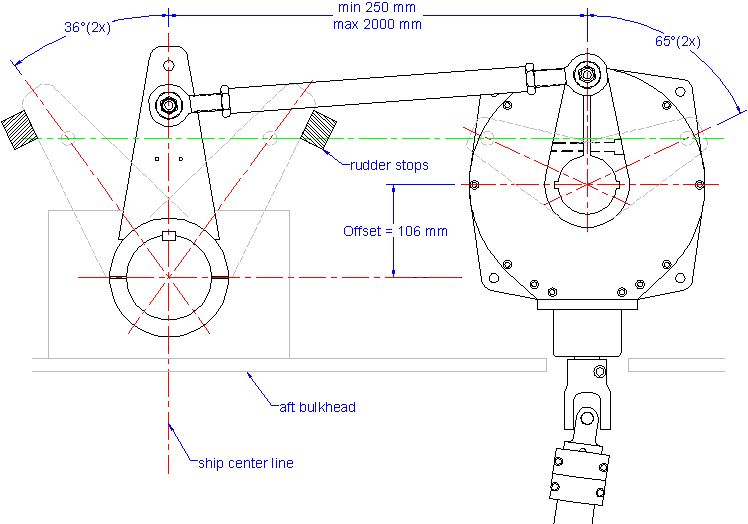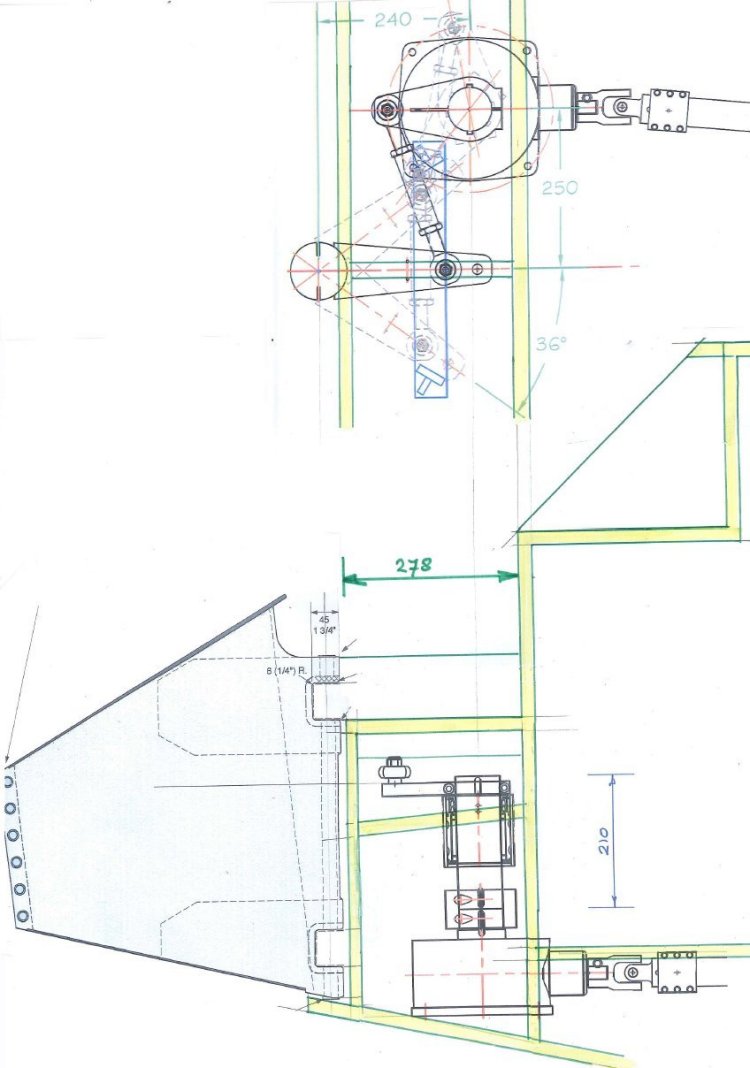
The lever geometry of the transmission system is based on the principle of Wide Angle Geometry. This results in a very direct steering amidships (where the loads are low) and a more indirect and powerful steering at full rudder (where the loads are maximal). Due to this unique feature, the total number of turns of the wheel on a transmission steering system can be reduced with 30-40% compared to a cable system with the same maximum rim loads. This effect is achieved by an unequal length of the output and tiller lever. The output lever has 130 mm centres and the tiller lever 200 mm. The diagram below shows the mechanical advantage (lever reduction) in relation to the rudder angle. Around midships the reduction is quite constant, and above 15 degrees rudder the mechanical advantage nearly doubles compared to the midships advantage. The consequence of wide angle geometry is the offset angle of the levers in midships position. This offset angle is necessary to achieve the same travel to port and starboard. The offset angle varies with the distance from the output lever to the tiller lever. Offset angles can be avoided when the complete gearbox is put on an offset distance. Please see the below layout and text for more details.

Offset angles can be avoided when the complete gearbox is put on an offset distance. The offset of 106 mm is independent of the distance between the gearbox and rudder stock. A good confirmation of the correct geometry is to check if all 4 endpoints of the lever pins are in one line (see the green line in the layout).

This principle of Wide Angle geometry with offset distance is used on Fram's steering system.

Original text and drawings by